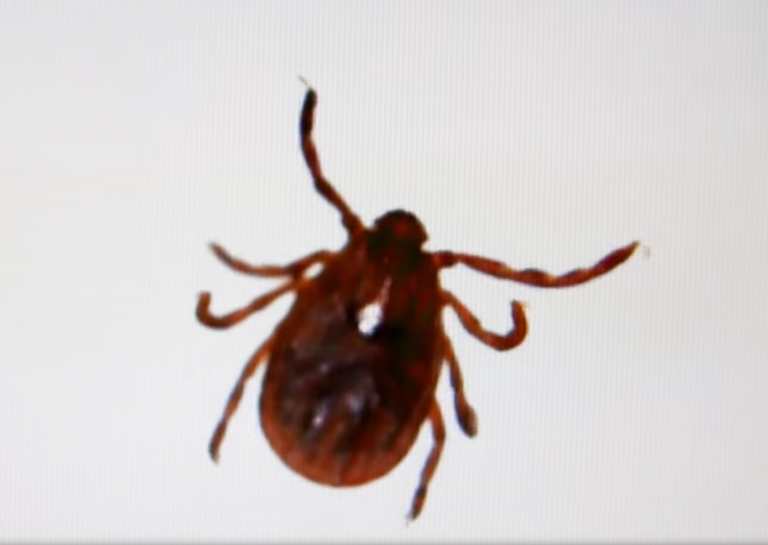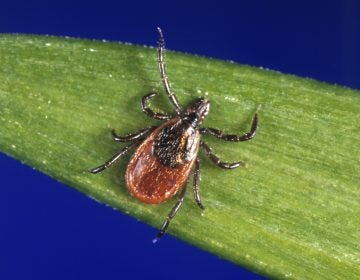Invasive Asian longhorn ticks found in Pennsylvania, New Jersey
Here's what to do if you find one.

Invasive tick (NJ.com / youtu.be/r5e8_mjxY8Q)
An invasive species, the Asian longhorn tick, has arrived in Pennsylvania.
The first major invasion of the arachnid in the U.S. was reported last year on a New Jersey sheep farm in Hunterdon County. And now, thanks to hunters in Centre County, who sent a strange tick off for testing, the longhorn tick is now a confirmed resident in Pennsylvania.
Shannon Powers with the Pennsylvania Department of Agriculture says the longhorn tick resembles native ticks, such as the rabbit tick, but is unique.
“This tick can reproduce asexually, so nearly all the ticks that have been found in the U.S. are female, and they can lay up to 2,000 eggs after feeding on a single host,” said Powers.
Longhorn ticks tend to breed in large numbers on livestock, causing severe anemia, she said. But samples gathered in the U.S. have not yet shown evidence of infections common to other species, such as the deer tick.
“We don’t know how an invasive insect that’s not native to the U.S. is going to behave in the climate conditions and on the hosts as they exist here,” Power said.
She recommended staying vigilant.
“In general, with ticks, it’s important to take precautions not to transfer them into your home,” she said.
How to prevent tick bites, what to do if you find one
The Centers for Disease Control and Prevention recommends using insect repellent and avoiding “grassy, brushy or wooded areas” where ticks like to hang out. The CDC also recommends taking a shower within two hours of being outdoors — and immediately putting dry clothes that may have come in contact with ticks in the dryer for 10 minutes, or washing wet clothes in hot water.
Tadhgh Rainey with Hunterdon County Division of Health in New Jersey helped identify the longhorn, and he urges residents to send in samples of ticks to monitoring organizations in their area.
“There’s some evidence that this tick has been in the U.S. for at least a decade, but it hasn’t had the opportunity to thrive,” said Rainey. “Without a resident reporting her problem, we wouldn’t have known. It’s a great way to help your neighbors.”
Since the longhorn ticks tends to swarm when they find an acceptable host, Rainey said early identification is key to managing the species.
“Because, like many things, and especially this tick, if you catch the infestation early, you can get it under control with little fanfare,” he said. “And we’ll probably treat this like an invasive mosquito. If it’s a problem, we’ll deal with it. If not, we’ll let it live.”
Pennsylvania residents can send samples of ticks to the Penn State University Insect Identification Laboratory. New Jersey residents are advised to contact their county board of health.
WHYY is your source for fact-based, in-depth journalism and information. As a nonprofit organization, we rely on financial support from readers like you. Please give today.



